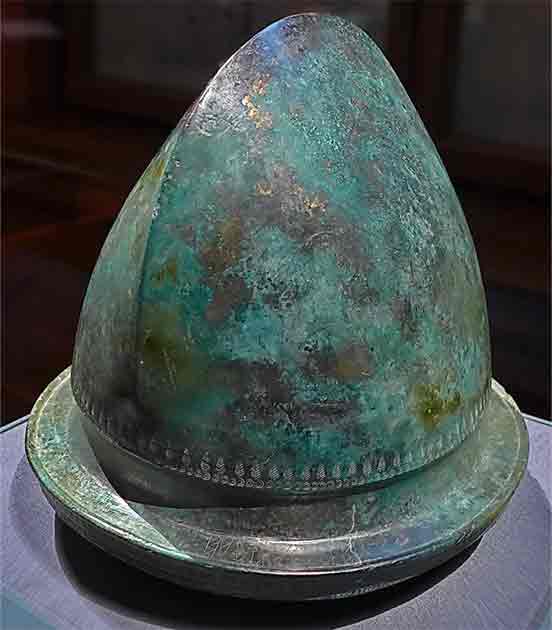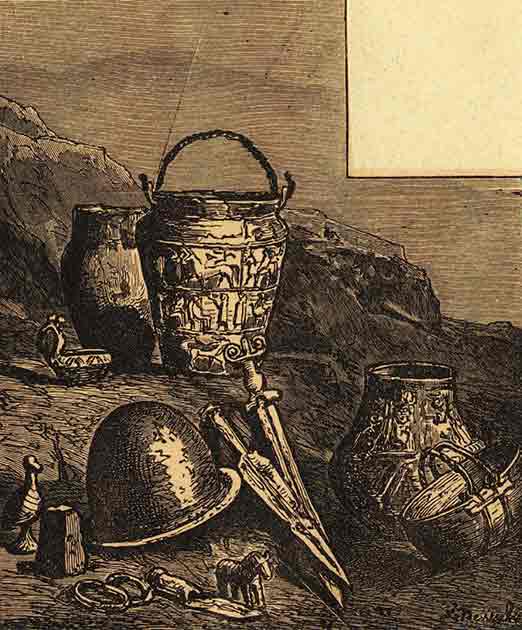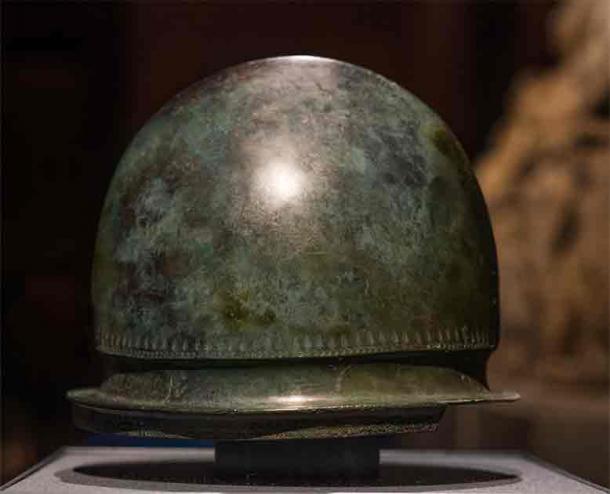Do the Runes on the Negau Helmet B Really Date Back Over 2,000 Years?
The exact origin of the runic alphabet is still an enigma for scholars, who continue in their efforts to deduce when it first appeared. Because of this, every new archaeological excavation that bears a runic inscription is closely studied and scrutinized. When the Negau helmets were discovered in 1812, a crisp and clear runic inscription opened a flurry of questions, and many theories have been proposed as to their exact meaning. Could it really be that the Negau helmets bear Germanic runes that date to between 350 and 450 BC?

The Negau helmet B includes an inscription which continues to baffle experts. (Peter1936F / CC BY-SA 4.0)
Negau Helmet Bears an Inscription That Holds Many Mysteries
The Negau Helmets were discovered in 1812, at a cache found at the site of Ženjak, close to the city and castle of Negau in the Duchy of Styria. Nowadays, the site goes by its original name, Negova, and is situated in the north-east of modern Slovenia.
The cache contained 26 bronze helmets, which were likely deposited as a ceremonial offering. The artifacts discovered at the site of Ženjak, dating back to between 350 and 450 BC, were remarkably well-preserved considering their age.
The helmets have a distinct shape and belong to the classic Etruscan vetulonic type. The shape of the helmets found at Ženjak is often referred to as the Negau type. These helmets feature a finely crafted sloping conical top, complemented by a wide brim at the bottom.
At first glance, these seemed like ordinary Iron Age helmets that were common in this region, especially amongst the Etruscans and the Rhaetians. However, close scrutiny revealed that one of the helmets, since dubbed Negau B, bore a runic inscription written in the northern Etruscan alphabet. It was considered to date to 350 BC, and read, from right to left:

At once the scholarly world erupted with questions and theories. What language was this written in? What did it mean and what did it signify? Several theories have been proposed over the decades, with scholars still studying the inscriptions, well over a century after its discovery.
Some say that the inscription found on the Negau helmet is in the Germanic language, mediated through Rhaetic and into this inscription. Others claim it is certainly written in the Celtic language, while others stick to Etruscan. But what is the truth?

Illustration of the sacrificial hoard discovery, which included the so-called Negau helmets. (Public domain)
The Negau Helmet and the Ancient Runes of Europe’s Bronze Age
One of the more recent studies concluded by Tom Markey and finalized in 2001, proposes a theory that the inscription can be translated as Hariχasti teiva. Here, Markey recognizes two elements; the first is Harigast, a common ancient Germanic name, and the other is teiva, derived from proto-Germanic teiwaz, meaning “god.”
A direct translation would thus be “Harigast the Priest.” Thus, it could signify the ownership of the Negau helmet, or the one who deposited it as a sacrifice. But, more interestingly, it could signify that Proto-Germanic peoples utilized a foreign, neighboring script in order to write their own language.
Thus, the emergence of the early Germanic runes could have been influenced by the Etruscan/Rhaetic script. This, of course, concludes that the script is not connected to the Germanic/Nordic runes which emerged later, and that it certainly belongs to the Etruscan script.
Another helmet, called Negau A, bears four separate, smaller inscriptions. Markey studied these as well, but this time they proved to be likely from the Celtic language. He translated them as Kerup, likely connected to the Celtic name Cerubogios; Dubni Banuabi, meaning “of Dubnos the Pig-Slayer”; sirago turbi or “astral priest of the troop”; and Iars’e esvii or “Iarsus the divine.”
Could these inscriptions be connected to the one on Negau B? And did a group of men deposit the helmets at the same time? If so, it could signify that the Proto-Germanic, Celtic and Rhaetic peoples intermingled, or at least lived in relative peace, so far as to deposit a sacrificial hoard together.

Negau B bronze helmet with its mysterious inscription. (Dan Diffendale / CC BY-NC-SA 2.0 DEED)
The Negau Helmet Provides a Window into Europe’s Past
The discovery of the Negau helmets has contributed significantly to our understanding of Celtic and Proto-Germanic culture and languages, as well as warfare in ancient Europe as well. The helmets are now housed in various museums across Europe, including the Kunsthistorisches Museum in Vienna, Austria, and the Archaeological Museum in Zagreb, Croatia.
Thanks to their excellent preservation, they allowed us to better understand the process of manufacture of these ancient helmets, as well as how the designs evolved over the centuries. Keep in mind that these helmets were deposited as a sacrifice in the final stages of the European Bronze Age, in a time when the Iron Age was slowly becoming a thing.
The Nagau helmets survive as a last vestige of a dying age. Meanwhile, the inscriptions they bear could point to the appearance of a new culture in Europe, the Proto-Germanics! So many secrets, hidden in one runic inscription!
Top image: Inscription on the Negau helmet B. Source: Peter1936F / CC BY-SA 4.0
By Aleksa Vučković
helmet, Slovenia, Language, offering, sacrifice, inscription, runes, script
#Runes #Negau #Helmet #Date #Years
